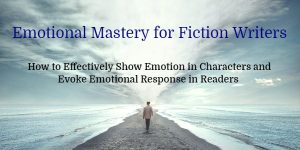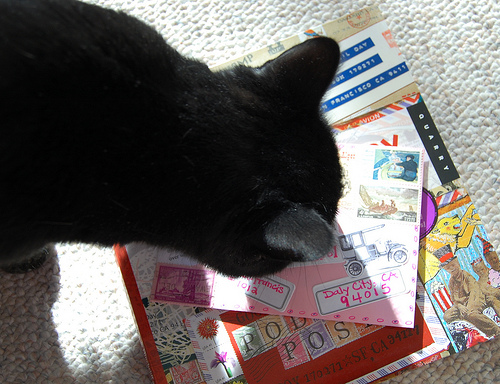How Writers Can Develop Emotional Connections between Reader and Hero
Today’s guest post is by Patrick Cole:
When I first met Sydney Carton in A Tale of Two Cities, I was in high school and certainly not yet “fully baked.” In fact, my major emotional connection to the novel was not with Sydney Carton but with Lucy and Charles. They were so in love, and I just wanted there to be a romantic happy ending for them. Dickens did not disappoint me.
Of course, since that time, I have reread this novel two more times—once in college for an English Lit. class and once more because there is much to learn from Dickens’s writing.
To me, now that I am closer to coming out of the oven, Carton as a redemptive figure is one of the best in literature. And while many fiction writers do not have “Christlike” characters in their novels, the methods used by Dickens to establish that emotional connection are timeless and universal. Here are things I have learned that you can learn too.
- What’s the Backstory?
Readers cannot develop connections with characters unless they have the backstory that got them to where they are at the opening of your piece.
Backstories can help to establish empathy, understanding, and credibility, as long as they are done well.
Before you ever develop your protagonist in his/her current situation, spend some time developing a history that logically leads to the emotional and behavioral state in which they find themselves today. Never do this through a narrative. Provide that history through thoughts, behaviors, words and interactions with other characters.
It’s easy to see Sydney Carton’s backstory by his behaviors in the beginning of the tale—he is a drunk who feels worthless and inept, despite his stellar legal history. He has “fallen” and, though would like to redeem himself, cannot muster the strength and courage to pull his life together. He has no purpose.
- A Relatable Emotional State
Readers cannot “connect” with characters unless they can relate the emotions to their own lives. They do not necessarily have to be emotions that they have personally experienced, but they have to be credible and emotions with which a reader is at least familiar.
Fear, joy, hope, helplessness, anger, love, and dismay are all emotions that readers will have felt in their own lives.
However, when protagonists exhibit variations and/or extremes of these emotions, readers must still be able to relate. Extreme anger is rage; extreme love can be obsession. If those variations and extremes are developed correctly within a character, then readers will be able to relate them to people they know, to characters in a TV show, etc. This creates the emotional connection and understanding that an author wants. And it also creates characters who are memorable.
Sydney Carton has love that is unrequited. He will never “win” Lucy, but his love is so great that he wills himself to sacrifice his love for her sake. He begins to see love in a larger context. He loves someone else far more than he loves himself.
A mother reading this tale gets it. She loves her child more than she loves herself and understands the sacrifices that one is willing to make when that type of love is present.
The other important consideration here is credibility. You may have a character who operates from a certain moral compass. He becomes enraged by injustice, and that emotion remains consistent throughout your story. You may also have a character who changes her moral compass as the tale progresses. That change must also be credible, if you expect the reader to connect and empathize. Carton’s transformation was gradual and progressive as the plot was developed. The reader could go through this shift in emotions with him—it was a perfect transformation.
- Let Emotions of a Character Display Flaws
We all make mistakes. Often those mistakes occur because we operate on emotion rather than reason. We make impulsive decisions and act on those decisions without stepping back to allow rational thought to occur. Thus, we shoot off an angry email in the heat of the moment and damage a relationship or create problems that did not need to be.
Readers can relate to characters who act impulsively based upon their emotions at the moment. This is one of the reasons why I love Janet Evanovich’s character Stephanie Plum. She is so “real” to me—a single thrity-something protagonist whose emotional roller coaster is one of the most appealing aspects of the series. Evanovich is sometimes able to just use phrases correctly to reveal an entire emotion, as Stephanie struggles with the emotional conflict between attraction to the stable cop, Morelli, and the exciting, almost “forbidden” one to Ranger, the mysterious, dark figure who keeps popping up in her adventures. Stephanie’s impulsivity also leads her to take risks, sometimes with disastrous consequences, and we can all relate to that, of course.
Emotional Connections Are Made through Characters, Not Plot
When we think back upon the things that have made a piece of fiction memorable, we tend not to remember plot details. How many of us really remember all the detail of To Kill a Mockingbird? Or even A Tale of Two Cities? We remember the characters. We remember the emotional attachment that Atticus Finch has to justice; we remember Boo’s emotional struggle with the concept of equality and tolerance; we remember the final actions of Sydney Carton as he trades places with Charles Darney and consoles the young seamstress on the way to execution.
When writers of fiction can develop emotional connections between their readers and characters, they have a piece of writing that will be well received and remembered.
Reach into your own emotional history; reach into the emotional history of those you know; imbed those emotions into your characters and make it personal. When you make it personal to yourself, you make it personal to your readers too.
 Patrick Cole is an entrepreneur and freelancer. He is also a contributing blogger for several websites. Patrick loves self-education and rock music. Connect with Patrick via Facebook, Google+ and Twitter
Patrick Cole is an entrepreneur and freelancer. He is also a contributing blogger for several websites. Patrick loves self-education and rock music. Connect with Patrick via Facebook, Google+ and Twitter
Feature Photo Credit: monika pudlovskyt? via Compfight cc
Want to master the emotional craft of fiction?
Dive into the online course Emotional Mastery for Fiction Writers!
In this course, you’ll be given tools to show emotions in your characters. You’ll be given techniques to help spark emotional response in your readers. What is going to bring it all together for you is practice. Study and practice. And you’ll have exercises in this course to help you put into practice what you learn.
There are two facets of emotion in fiction: conveying what your character is feeling and evoking emotion in your reader. We’ll look at these two facets separately and in de pth. Yet, they are intrinsically connected.
pth. Yet, they are intrinsically connected.
Emotional mastery requires writers to set up the dynamics of a scene in such a visual, textural way that readers can’t help but feel what they are meant to feel. Understanding that emotional mastery requires a twofold approach—the emotional landscape of both the character and the reader—is the first step.
Want to learn how to become a masterful wielder of emotion in your fiction? Enroll in my new online video course, Emotional Mastery for Fiction Writers.
You’ll get lifetime access to all the videos and more than three dozen downloadable assignments. And with a 30-day money-back guarantee, you have NOTHING to lose by jumping in. Sign up NOW.
This course will challenge you to become an “emotion master.” Are you ready and willing to go on this journey deep into emotional territory? If you want your characters to move your readers, take the plunge!












Thanks for this article, Patrick. I especially like your idea on displaying the history and emotion through action and other characters. This shows rather than tells, and if done through other characters, it also shows their background, thoughts and interactions. I also love your example of A Tale of Two Cities. That is my favorite classic and I am rereading it now. 🙂
Great article. I so agree that backstory, at least in the author’s mind, is essential to portraying a realistic character. However, we are warned, often, not to overload a novel with backstory, and I see the point of that too.
So I’m perplexed by authors who include a ton of backstory in the novel and get away with it. A couple of examples: Noel Hynd, Jeffrey Archer. Is this part of knowing the rules so you can break them, or what?